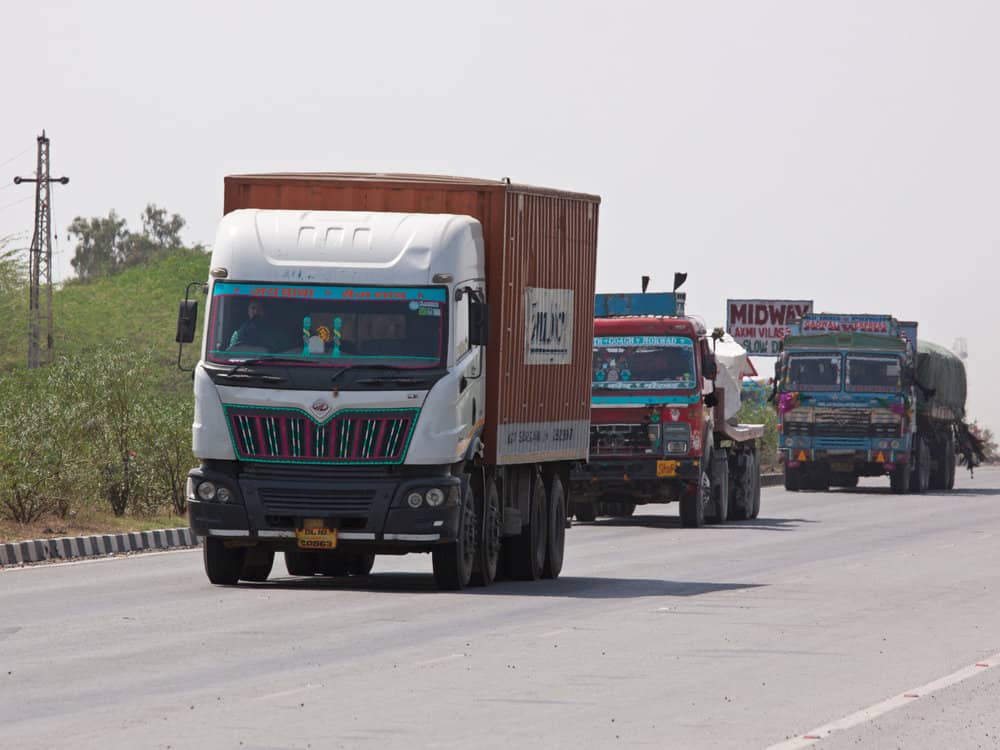
On the facade, it would almost look like the trucking industry in the U.S. and its Indian counterpart are two different entities. But when the regulatory measures and technological advancements are set aside, the industries do have a lot in common. Truckers from both the countries complain of lower wages, broker dominance in the spot market, excessive governmental clampdown, and quite recently the fast-climbing fuel prices. The Indian logistics industry is also facing heat with labor shortage – not just with drivers to haul freight, but also in warehousing and last-mile delivery.
India and a herd of the developing nations like China and Brazil are now witnessing large-scale disruptions in the trucking industry, with strikes being organized to show resistance and send a message to the government on rising fuel costs, which has been galloping towards $90 a barrel. But the problems that stare down at the Indian trucking industry have more to do with the incumbent government’s economic stances than with just a simple see-sawing of global oil prices.
In the dying stages of 2016, Narendra Modi, the Prime Minister of India went on public TV and announced that the currency rupee notes of 500 and 1000 would be made invalid from midnight, effectively wiping out 86% of all currency in distribution across the country. The government argued that their rationale behind such a move was to cut down on the black money being hoarded and to force parallel economies that sustain on such money out into the open.
This move, termed “demonetization” led to widespread panic in the country, effectively nuking the economy of the country and bringing the largely unregulated transportation industry to a screeching halt.
In 2016, India was barely opening up to the promise of digitization, with digital transactions still being a practice that had not caught the eyes of the working class. The transportation industry relied on hard cash payments, and with the bigger denominations turning into worthless pieces of paper and the smaller denominations getting scarce, the industry was embroiled in a nightmare that floated around for months at a stretch.
The fallout of this economic measure was by no means isolated with the truckers, but had bit the shippers hard. With no working capital, the shippers were out of business which meant that the trucking industry faced a two-headed problem – reduction in both capacity and volume.
But once the initial shock wore off, the market did recover, although the scars of demonetization can still be seen and felt. A year into this, the BJP government announced another ambitious economic reform called the Goods and Services Tax (GST), which replaced the existing gamut of taxes with one single umbrella tax, albeit with three different tax slabs. This was met with universal confusion as the tax slabs although few, were erratic at best and also requiring massive revamping in the tax structure within firms. It did not help the cause when the government over the next few months went on making countless tax slab changes for everyday products, putting the industry in a quandary.
Though it can be argued that the GST structure would inherently be beneficial to the industry over the longer run, experts agree that it is too early for the fruits of tax change to rub off on the transportation ecosystem.
The more recent and far more alarming prospect is the fuel price rise, which has been a ubiquitous concern across the world. FreightWaves has been at the thick of things, covering the story in detail over this year. The price of Brent crude has moved up by over 70% since last June, skyrocketing the operational costs of trucking fleets. The Indian government which had saved a lot on its fiscal fuel expenditure over the last few years when the oil rates were at a historic low, is now facing the heat as its expenditure ballooned this year.
The Indian consumer pays a lot of taxes on his fuel, with some cities in the country paying more than half the price of fuel as taxes. This artificial jacking up of prices has led to widespread dissent and remains to be a primary cause for the frequent truck strikes. Adding to this, the Insurance Regulatory and Development Authority of India (IRDAI) has also revised its third party liability insurance for the 2018-19 financial year which is up by 30%, drawing flak from the trucking community. As these factors sink in, inflationary rates would be expected to rear its head again with the average consumers being the ones that would be hard hit by the economic reforms and the fuel price rise.
Stay up-to-date with the latest commentary and insights on FreightTech and the impact to the markets by subscribing.
